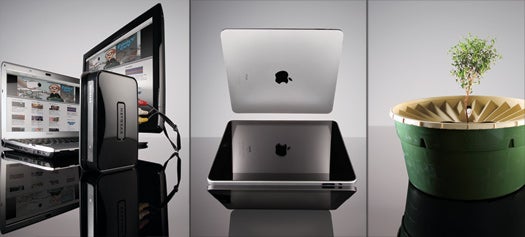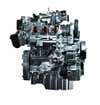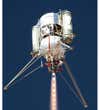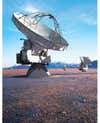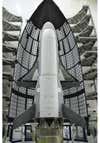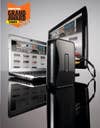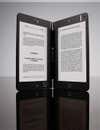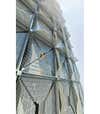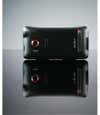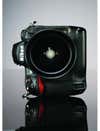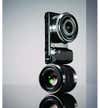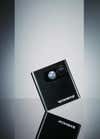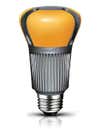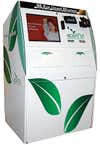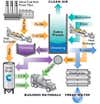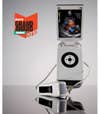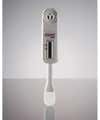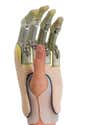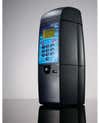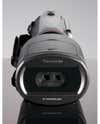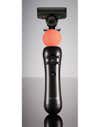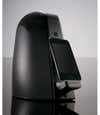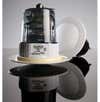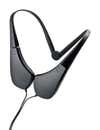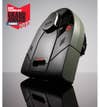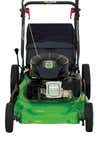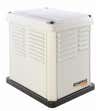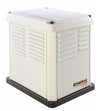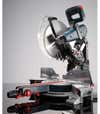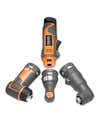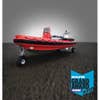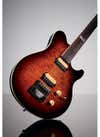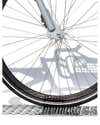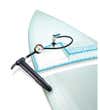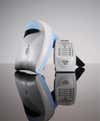It’s that time again, the time for year-end wrap-ups. At PopSci, we expand the scope of our 2010 list to include the defining innovations in a wide range of categories. When viewed together here, it’s a fascinating portrait of the year that was.
Click to launch the photo gallery
Auto Tech Grand Award Winner: Porsche 918 Spyder
The future of the car will be electrified, and the Porsche 918 Spyder concept shows just how much fun it will be. In this mid-engine supercar’s current configuration, a 3.4-liter racing V8 shares propulsion duty with three electric motors that produce a combined 218 horsepower. Together, all four powerplants create 718 horsepower and catapult the Spyder from 0 to 60 in 3.2 seconds, with a top speed of 198 mphabut if you don’t floor it, the Porsche can deliver up to 78 mpg. In E-Drive mode, the electric motors alone propel the vehicle. Three different hybrid modes allow you to choose between varying degrees of efficiency and performance. In the unlikely event you need more power, the aE Boosta button will send a seven-second blast of current to the electric motors. Nearly 2,000 people have already signed letters of intent to buy a Spyder, and the automaker is developing it for sale, though it’s not clear when the estimated half-million-dollar car will appear on streets. In the meantime, the Spyder is already serving as a testbed for technology that will trickle down to the rest of us. Price not set. See more at the Best of What’s New 2010 site. Jump To:
Auto Tech: Fiat MultiAir
Conventional internal combustion engines waste about 10 percent of their potential power through apumping lossesa caused by the throttle plate that regulates and restricts airflow into cylinders. In 2001, BMW’s Valvetronic system reduced those losses using electronically controlled intake valves. But the BMW system is complex and expensive. Now Fiat’s MultiAir engines will deliver a similar edge in fuel consumption and carbon-dioxide emissions with a simpler, more affordable design that makes minute adjustments to the intake valve. The system is inexpensive enough that it will soon power millions of cars from Fiat and its partner, Chrysler. MultiAir rolls out with the Fiat 500, which comes to the U.S. early next year. See more at the Best of What’s New 2010 site. Jump To:
Auto Tech: 2011 Ferrari 458 Italia
The Ferrari 458 Italia isn’t just a voluptuous, 202mph beauty that burns from 0 to 60 in just 3.2 seconds. Yes, it’s the company’s most technically sophisticated sports car. The shrieking V8 at the car’s center produces 562 horsepower and 398 pound-feet of torque from just 4.5 liters of displacement–both industry records in power-per-liter for a car without a turbo–or supercharger. But the 458 is also user-friendly. Inside, the steering-wheel-mounted manettino lever offers a range of driver-selectable settings to adjust the car’s traction and stability systems (derived from the company’s F-1 vehicles), its magnetic-fluid shock absorbers, and its paddle-shifted, dual-clutch automated manual transmission, which lets drivers fire off shifts like Michael Schumacher himself. The result is a car that comes out of turns 32 percent faster than the Ferrari F430. Earlier this year Ferrari had to recall the 2010 458s to replace a faulty panel sealant that caused a few cars to catch fire. But the fix was simple and quickly implemented, and it doesn’t change the fact that this car can match the legendary $652,000 Ferrari Enzo supercar around the company’s track in Fiorano, at one third of the Enzo’s price. $230,000. See more at the Best of What’s New 2010 site. Jump To:
Auto Tech: 2010 Motoczysz E1PC
This year, a tiny Oregon company built an electric motorcycle, the 2010 MotoCzysz E1PC, and in June it beat every battery-powered rival in cycling’s most death-defying challenge: the Isle of Man Tourist Trophy race. Powered by a 134-horsepower oil-cooled electric motor and a 12.5-kilowatt-hour lithium-polymer battery pack, the E1PC reached a top speed of 135 mph on the island’s mountainous road course, completing its 37.7-mile lap in just over 23 minutes. As with any electric vehicle, limited driving range is a problem; the MotoCzysz battery held enough of a charge to tear up one lap, but it probably couldn’t have done another. Still, company founder Michael Czysz says the prototype bike can manage 100 miles in less-stressful conditions. See more at the Best of What’s New 2010 site. Jump To:
Auto Tech: 2011 Ford Fiesta
This little Ford represents something big. The Fiesta is the anti-Pintoathe kind of well-engineered, sporty yet frugal small car that Detroit has historically refused to build. Available as a sedan or a five-door hatchback, the 2011 Fiesta gets 120 horsepower from a 1.6-liter four-cylinder engine, good for a reasonably brisk 9.3-second run to 60 mph. The steering is quick, the suspension frisky. Inside, the Fiesta’s amenities, including Ford’s voice-activated Sync system, easily surpass what you’ll find in other cars in its class. An available six-speed, dual-clutch automatic transmission is technology usually limited to pricey luxury cars. And that engine and transmission combine for Toyota-smoking mileage: 29 mpg in the city and 40 mpg on the highway. Aside from the two-seat, snail-paced Smart, the Fiesta is the only non-hybrid on the market to achieve 40 mpg. From $14,000. See more at the Best of What’s New 2010 site. Jump To:
2011 Hyundai Sonata 2.0T
With the Sonata 2.0T, Hyundai demolishes the notion that high fuel economy entails low performance. By pairing twin-scroll turbochargers (which reach peak performance quicker than a conventional charger) with a sophisticated direct-fuel-injection system, the 2.0T wrings 274 horsepower out of a relatively small 2.4-liter, four-cylinder enginea€”more total horsepower than any V6 in its class. Yet the Hyundai also ekes out 33 highway mpg. From $24,865. See more at the Best of What’s New 2010 site. Jump To:
Auto Tech: 2011 Chevrolet Volt
When the Chevrolet Volt exited the assembly line in November, it became the first and only production plug-in hybrid on the American road. GM says the four-passenger hatchback’s power train will allow 78 percent of American drivers to forgo gasoline entirely during their daily commutes. Unlike the purely electric Nissan Leaf, which can travel roughly 100 miles before halting for a recharge, the Volt can travel coast-to-coasta€”a full charge of the battery is good for 25 to 50 miles of driving; after that, the gas engine starts up and generates electricity for the battery. The engine adds another 310 miles of range, and you can gas up as needed until you get a chance to plug in, while still getting mileage in the mid-to-high 30s. From $41,000, or $33,500 after $7,500 federal tax credit. See more at the Best of What’s New 2010 site. Jump To:
Auto Tech: Volvo Pedestrian Detection
Volvo’s 2011 S60 will include as an option the company’s latest lifesaving gadget, Pedestrian Detection, which can spot people at up to 160 feet and brake to avoid a collision. When a bumper-mounted radar detects what might be a pedestrian, a camera mounted near the rearview mirror snaps a shot, and an onboard computer compares the photo against a database of 10,000 images in search of telling detailsaa walker’s swinging arms, for example, or his moving head. The S60 precharges its brakes, and if the driver fails to respond to an audible alert, the Volvo stops itself. Below 22 mph, the S60 can come to a complete stop before striking a pedestrian; at higher speeds, the vehicle’s speed is sharply reduced. For now, the system has trouble spotting children and animals under 32 inches tall, but Volvo says it will improve the sensitivity so that eventually it will detect dogs, deer and others. See more at the Best of What’s New 2010 site. Jump To:
Auto Tech: 2011 Jaguar XJ
Once the symbol of upper-crust influence, the Jaguar XJ had over the decades declined as steadily as the British Empire. Now the XJ embodies Jaguar’s unexpected renaissance as a lithe and ultra-modern alternative to the German luxury brands. With an aluminum chassis that weighs less than the steel underpinnings of the Mini Cooper, the 4,100- to 4,300-pound Jagagorgeously rewrought by Ian Callum, the designer of the Aston Martin DB7ais easily the lightest sedan in its class. Powerful engines, including 470- and 510-horsepower supercharged V8s, make it nearly as quick as vastly higher-priced competitors. In a dash from 0 to 150 mph, the 470-horsepower XJ is a mere second behind the 514-horsepower, $88,475 Mercedes E63 AMG. Its four-wheel-disc brakes can also stop the car at 70 mph in just 159 feet. $73,575. See more at the Best of What’s New 2010 site. Jump To:
Auto Tech: Autonomous Audi TTS Pikes Peak
Unlike previous self-piloted vehicles, aShelleyaaso nicknamed by its creators at Audi parent company Volkswagen’s Electronics Research Laboratory, Stanford University’s Dynamic Design Lab, and Oracleais designed for speed. It navigates using a GPS system that pinpoints its location on pre-mapped roads to within an inch. So it can’t dodge traffic, but that’s not the point. Instead the goal is to max out velocity and traction, using wheel sensors, an accelerometer and a gyroscope to monitor the car’s performance. On the Bonneville Salt Flats in Utah last year, Shelley reached a top speed of 135 mph, and this fall it successfully ran the Pikes Peak road course in Colorado. See more at the Best of What’s New 2010 site. Jump To:
Aviation & Space Grand Award Winner: Solar Impulse HB-SIA
Zero-emission flight leapt forward in July, when Swiss pilot AndrÃ(C) Borschberg flew the solar- and battery-powered Solar Impulse HB-SIA for 26 hours, 9 minutes and 10 seconds, reaching a height of 28,500 feet before gliding back down and marking the first time any aircraft had flown overnight on energy collected during the day. Made largely of carbon fiber, the HB-SIA weighs 3,500 pounds, roughly the same as a midsize sedan. The plane’s 208-foot wingspan and its horizontal tail stabilizer are covered with 11,628 solar cells that supply electricity to its onboard electronics, four 10-horsepower electric motors and lithium-polymer battery packs. The battery packs take over from the solar panels approximately two hours before dusk, when the sun’s rays become too weak to be useful. Bertrand Piccard, the endurance balloonist who co-founded Solar Impulse with Borschberg in 2003, says he wants the HB-SIA‘s successor, the HB-SIB, to achieve the first solar-powered flight around the world as early as 2013. solarimpulse.com See more at the Best of What’s New 2010 site. Jump To:
Aviation & Space: Masten Space Systems Xombie
Vertical takeoff/vertical landing (VTVL) spacecraft made an important advance in May, when a demonstration spacecraft called Xombie, built by the Mojave, Californiaa€”based firm Masten Space Systems, became the first of its kind to shut down its engine mid-flight, restart, and then land. The eventual goal is for unmanned VTVL rockets to rise to space and return several times a day, carrying zero-gravity experiments with each pass. The challenge is to carefully consume fuel throughout the trip so that the rocket has enough to landa€”hence the importance of Xombie’s success. masten-space.com See more at the Best of What’s New 2010 site. Jump To:
Aviation & Space: ESA Cryosat-2
The European Space Agency launched a satellite in April that will give scientists unprecedented data about the polar ice caps and track changes in the thickness of the ice down to around half an inch a€” essential information for monitoring climate change. The satellite, CryoSat-2, is a second attempt; the first CryoSat was destroyed by a rocket malfunction in 2005. But ESA built an advanced replacement, with software upgrades and greater battery capacity powering an interferometric radar range-finder with twin antennas which measures the height difference between floating ice and open water. www.esa.int/cryosat See more at the Best of What’s New 2010 site. Jump To:
Aviation & Space: Atacama Large Millimeter Array
The Atacama Large Millimeter Array (ALMA) in the Chilean Andes, the most powerful radio-telescope array on the planet, powered up its first three antennas earlier this year. By 2013, engineers should finish installing at least 60 more of the 39-foot-diameter, 100-ton dishes (plus four smaller dishes). Together they will capture the narrow spectrum of radiation that can pass through interstellar dust clouds, thereby allowing scientists to observe, among other things, the gravitational collapse that initiates the birth of stars and the red-shifted radiation emitted 10 billion years ago from the far reaches of the universe. almaobservatory.org See more at the Best of What’s New 2010 site. Jump To:
Aviation & Space: Airbus Military A400M
The Airbus A400M, which made its first flight in late 2009 (after two years of delay and $7 billion in cost overruns), is built for flexibility: It can haul two attack helicopters or 116 soldiers, while remaining maneuverable enough to get in and out of the front lines quickly. The craft is powered by turboprops rather than jets, which can suck in debris on unimproved airfields. The relatively lightweight carbon-composite wings keep the plane’s weight low enough (the exact figure is a trade secret) that, when equipped with reinforced shocks, rugged tires and debris-resistant turboprops, the A400M can land on and take off from dirt and gravel runways. Yet the craft can carry 80,000 pounds, nearly twice as much as the rival Lockheed Martin C-130J Super Hercules. a400m.com See more at the Best of What’s New 2010 site. Jump To:
Aviation & Space: Spacex Falcon-9
When NASA retires the space shuttle next year, the only American-owned option the U.S. government will have for getting cargo to the International Space Station is to ride with a private spaceflight company. Such an arrangement became viable in June, when SpaceX’s Falcon 9 a€” a 180-foot, kerosene-and-liquid oxygen-fueled rocket capable of delivering six metric tons of cargo or seven astronauts to orbita€”made its maiden voyage to space. SpaceX engineers designed nearly every piece of the rocket from scratch, and made the Falcon 9 affordable enough that the company will haul cargo to space for $133 million per trip, compared with $450 million for each space-shuttle flight. SpaceX could begin regular cargo flights to the ISS as early as next year. spacex.com See more at the Best of What’s New 2010 site. Jump To:
Aviation & Space: Eads Astrium Tandem-X Satellite
Existing satellite-generated maps of the Earth’s surface are cobbled together from multiple, inconsistent sources, leaving gaps in coverage and omitting vast amounts of detail. The TanDEM-X satellite, by working with another satellite, is set to create the first consistent digital elevation map of Earth’s entire land surfacea€”in 3-D. Built by the European aerospace contractor Astrium for the German space program, TanDEM-X reached orbit in June and joined the original TerraSAR-X satellite, which had been in space since 2007. An EADS subsidiary will begin licensing topographic maps in 2012. astrium.eads.net See more at the Best of What’s New 2010 site. Jump To:
Aviation & Space: Pratt & Whitney Rocketdyne/Boeing X-51A Waverider
After dropping from a B-52 bomber 50,000 feet above the Pacific in May, the unmanned X-51A WaveRider destroyed the scramjet endurance record by flying at five times the speed of sound for more than three minutes. Despite five decades of research, engineers had previously never able to keep a scramjet (an engine that generates rocket-level speed by massively compressing air from the atmosphere) going for more than 12 seconds. That’s because the air that feeds combustion in a scramjet moves through the engine at supersonic speed; the challenge is to keep that air feeding the burning fuel rather than snuffing it out. A new engine geometry and precision fuel injection made the record possible. The project, funded by the U.S. Air Force and the Pentagon’s Darpa, is a step toward developing advanced cruise missiles and cheaper space transport. pwrhypersonics.com See more at the Best of What’s New 2010 site. Jump To:
Aviation & Space: Piasecki/Carnegie Mellon Autonomous Helicopter
Previous unmanned helicopters, like the Boeing A160 Hummingbird, could operate only in obstacle-free, pre-mapped environments. In June, engineers at Piasecki Aircraft and the Robotics Institute at Carnegie Mellon University broke that barrier when they equipped an A/MH-6 Little Bird helicopter with an autonomous guidance system and tested it on an unfamiliar course in Arizona. The copter was able to map its surroundings on the go, recognize obstacles such as power lines and people, choose a landing site amid cluttered terrain, and set down safely, all without human guidance. GPS, inertial sensors and laser scanners gathered information about the environment, while onboard mapping software generated a 3-D map of the terrain. One promising application of this technology is to assist medevac helicopter pilots.www.ri.cmu.edu See more at the Best of What’s New 2010 site. Jump To:
Aviation & Space: Boeing X-37B
America’s first reusable unmanned spaceplane, the X-37B, made its inaugural trip to orbit in April, completing more than a decade of work by NASA and the U.S. Department of Defense. The X-37B looks and behaves like a shrunken space shuttle, right down to its method of reentry; once it completes its mission, it will glide back to Earth and land on a runway in California. What is the mission? Sorry, that’s classified. But we do know that this kind of unmanned mini shuttle is attractive for many reasons. Because it’s smaller and doesn’t carry humans, it’s cheaper and simpler to launch. It can be reused repeatedly to ferry satellites to orbit in its payload bay. Soon after launch, amateur astronomers spotted the plane in an orbit used by observation satellites. boeing.com See more at the Best of What’s New 2010 site. Jump To:
Computing Grand Award Winner: Intel Wireless Display
The Web offers more entertainment than cable, but who cares when it’s all stuck on tiny laptop screens? Now, Intel’s Wireless Display (WiDi) makes the Internet watchable by streaming whatever is on your PCa€”from House on Hulu to live games on NFL.coma€”to your big, beautiful TV, no programming or wires required. The key is how Intel’s latest Core iSeries processors, currently found in more than 50 laptops, talk to an included receiver box, which connects to your TV with a one-time setup. When you activate the WiDi (by pressing a dedicated button on the laptop keyboard), the chip creates a data stream out of the display information. Then it borrows some bandwidth from your Wi-Fi card to beam a smooth live image of your screen to the receiver. For now, WiDi is limited to 720p video, but a future upgrade will work with full 1080p high-def. And upcoming WiDi-ready TVs will cut out the receiver-box middleman. See more at the Best of What’s New 2010 site. Jump To:
Computing: Seagate BlackArmor PS 110 USB 3.0 Performance Kit
USB 3.0 is fasta€”fast enough to copy a 100-gigabyte video library in about 20 minutes. Seagate’s drive was the first to make that speed accessible. Thanks to USB 3.0’s five extra connector pins and a faster-spinning hard drive, the PS110 copied data three times as fast as a USB 2.0 model, and it bundled a converter to upgrade any laptop to 3.0 through its ExpressCard slot, paving the way for the company’s current GoFlex hard drives. $180. See more at the Best of What’s New 2010 site. Jump To:
Computing: Swiftpoint Mouse
When you use a laptop in a cramped airline seat, you have to sacrifice a mouse and use the less-accurate trackpad. The Swiftpoint, though, fits on the small, flat surface alongside the trackpad, turning your laptop into a no-compromise mobile workstation. To work in tight spaces, it uses a miniaturized version of the standard optical sensor and is held between your thumb and forefinger for precise control. $70. See more at the Best of What’s New 2010 site. Jump To:
Computing: AMD Radeon HD 5870 EyeFinity 6
AMD’s graphics engine runs six screens, enveloping you in games and movies even as it saves you money, energy and processing power. Most graphics cards can run only two monitors at once, but AMD’s single card sets a new standard by doing the job of three. Its driver software works around Windows’s four-monitor limit by telling the operating system to see all six screens as one big image. It delivers the final picture over the card’s fast, high-bandwidth monitor connection.$500. See more at the Best of What’s New 2010 site. Jump To:
Computing: Pixel Qi 3QI Display
Swap this zero-glare screen for your netbook’s current LCD, and you’ll be able to watch video or surf the Web, even in direct sunlight. The Pixel Qi display, originally developed for the One Laptop Per Child project, adds a reflective layer to each pixel on a standard LCD, so when you turn off the glare-inducing backlight, the screen reflects ambient light and gives the pixels a faint glow, producing an effect similar to E-Ink. Pixel Qi screens will be prebuilt into tablets by year’s end, with notebooks and cellphones following next year. $275. See more at the Best of What’s New 2010 site. Jump To:
Computing: Toshiba Libretto W105
The Libretto, an all-touchscreen computer, is the first Windows 7 PC to forgo keys, taking full advantage of the OS’s ability to read multiple points of screen contact at once. Its second seven-inch screen displays a virtual keyboard or can share a double-wide image with the upper screen. It’s sleek and subtle. An accelerometer detects when the notebook is upright, for instance, so you can read side-by-side pages of an e-book as you would a hardbound edition. $1,100. See more at the Best of What’s New 2010 site. Jump To:
Computing: Adobe Photoshop CS5
Retouchers no longer have to work pixel by pixel to fill in missing backgrounds. The new Photoshop makes use of an algorithm, developed with Princeton University and the University of Washington, that takes thousands of color patches from the image to find similar flecks to make a new sky or fill in the background when you trim out an obscuring branch or even a stranger who wandered into the shot. $700. See more at the Best of What’s New 2010 site. Jump To:
Computing: World Wide Web Consortium HTML5
HTML5 is a new Web language, standardized in cooperation with the WHAT Working Group, that will eventually allow any browseraon a computer, phone or iPadato present video, animation and games, without the aid of tricky software add-ons, such as Java, Flash or Silverlight. Developers will just code in what they want, and you’ll watch CNN, Major League Baseball and YouTube on any device with a browser. See more at the Best of What’s New 2010 site. Jump To:
Engineering Grand Award Winner: Burj Khalifa
The 2,716.5-foot-tall Burj is not merely athe world’s tallest buildinga; it’s taller than any other building by more than 1,000 feet. In structure, scale and sheer weight, the pride of Dubai is aa different animal,a says Skidmore Owings & Merrill engineer Bill Baker, who designed the beast with architect Adrian Smith. The engineering has the potential to transform the world’s skylines. Where the puny Willis (formerly Sears) Tower, for example, has a traditional relationship between height and girth (to make it taller, the footprint would have had to be to an unmanageable size), the Burj Khalifa can, because of its layout and core shape, rise without growing wider throughout its height. The tower’s floors wind upward in a series of setbacks around a central hexagonal core. That core is supported by one of three alegsa that form a sort of flattened tripod. The Burj is stronger for being heavierathe spire alone weighs 4,000 tonsaand all that downward pressure helps keep it in place, while reinforced concrete maintains the structure’s stability. Not that the architects didn’t have to windproof the thing. They put models in a wind tunnel to measure vibrations from the powerful gusts that blow past the building’s upper floors and compensated as they went. It took a while. aOur first shape was not so good,a Baker says, abut like a musical instrument, you tune it.a See more at the Best of What’s New 2010 site. Jump To:
Engineering: Sabiha Gökçen International Airport
Turkey’s 1999 Kocaeli earthquake killed 17,000 people, thousands of them simply because they were in seismically unsound buildings. This year, the design firm Arup built Istanbul’s airportathe emergency gateway in any future quakeato withstand an 8.0-magnitude earthquake (the Kocaeli was a 7.4). The building’s resilience comes from 300 rubber-and-steel springs called seismic isolators, typically 12 to 60 inches long, that allow for horizontal movement in the layer between ground and building. Each isolator’s two curved plates, with a bearing in the middle, allows the structure to shift during an earthquake without cracking. The number of isolators, as well as the amount of testinga14 different earthquake scenarios tested the building in hundredth-of-a-second intervalsais unprecedented. Finished in an astonishing 18 months, the airport is the largest earthquake-ready structure in the world. See more at the Best of What’s New 2010 site. Jump To:
Engineering: Italcementi I.Light
At the World Expo in Shanghai this year, the Italian pavilion was concrete, yet light passed right through it. Engineers and architects have talked about producing translucent concrete for generations, but until now the closest attempts only dotted the surface with points of translucency, like pixels in a low-res image. Think of Italcementi’s materialacement and admixtures bonded to a transparent thermoplastic matrix that provides a consistent translucencyaas high-resolutionÂ. It’s cheaper, stronger and offers a wider visual angle than any competitor, and it means that even windowless concrete buildings could someday be daylit. See more at the Best of What’s New 2010 site. Jump To:
Engineering: Wimbledon Centre Court
The 60,000-square-foot retractable roof on top of Wimbledon’s new Centre Court, created by the design firm Populous, means the end of rain-outs. The accordion-like fabric roof, which unfolds by way of nine 250-foot, court-spanning trusses, covers the open ground in seven minutes. The fabric, called Tenara, is tough enough to flex thousands of times, and it’s 40 percent translucent. The court remains dry, but natural light still gives matches that outdoor feel. See more at the Best of What’s New 2010 site. Jump To:
Engineering: Veer Towers
The wild slant of Las Vegas’s Veer Towers, designed by Chicago architecture firm Murphy/Jahn, evokes the drunken revelers in the streets below. The towers lean an astounding 5 degrees (the Leaning Tower of Pisa tilts just 3.9). A core of slanted columns hands off the load at the sixth, 19th and 32nd floors as the floorplates shift more than 35 feet across the 37-story height of the building. The result is an impossible-looking structure and, because the towers lean past each other, views from every room. It’s the year’s boldest example of a true partnership between architect and engineerawhat Jahn calls aarchineering.a See more at the Best of What’s New 2010 site. Jump To:
Engineering: Heliotrace
Building designers often try to reduce the daytime use of electric lights with daylight, and air-conditioning with natural airflow, but doing so tends to introduce unwanted heat from direct sunlight. HelioTrace, a shade system designed by Skidmore Owings & Merrill, ensures the right balance of shade and sun. Moveable external sunshades block out the rays as needed, window frames withstand thermal change, and chilled ceiling panels circulate cold water to cool the space without air-conditioning. Architects can tailor the system to climate, sun path and operations schedules. See more at the Best of What’s New 2010 site. Jump To:
Engineering: Kogod Cradle at Arena Stage
When the Arena Stage theater opened in 1961, the handful of flights in and out of nearby Ronald Reagan International Airport in Washington, D.C., weren’t such a big deal. Today, there’s a near-constant roar overhead. But exterior sound isn’t the only challenge. Architect Bing Thom, brought in to rework the space and add a new acradlea stage (for plays in development), decided to take the term literally, creating a rounded space that engulfs the audience. The result, however, was an acoustically difficult shape. Thom, with acoustical engineer Richard Talaske, dotted the theater with woven shapes that absorb sound. The spiraling hallway around the cradle lends sound isolation, as does the glass-and-timber layer that forms the building’s exterior. Now the audience only experiences the sounds that it should. See more at the Best of What’s New 2010 site. Jump To:
Gadgets Grand Award Winner: Apple iPad
After years of companies trying to cram a computer into a tabletathe resulting boxes have been too heavy, the software too sparse, the screen too smallaApple made what everyone wanted: a sleek device with a gorgeous screen and a dead- simple interface that makes you want to sit back and play. The trick? Rather than shrink a computer, enlarge a phone. By using the same multitouch gestures and App Store as the iPhone, Apple created an intimate gadget for updating your Facebook status, watching a movie, or reading a magazine. Making it look simple, though, is complicated. The 9.7-inch high-definition screen is the best example yet of in-plane switching, in which liquid crystals are aligned to allow a wider viewing angle than regular LCDs, and its speedy one-gigahertz processor is still efficient enough to run for nearly nine hours on a single charge. Apple sold three million in the first 80 days (more than the iPod or iPhone); now companies are rushing LCD tablets to market. The iPad, something between phone and computer, is what we always hoped a gadget could be. $500a€”$830. See more at the Best of What’s New 2010 site. Jump To:
Gadgets: HTC Evo 4G
It has a big screen, a big camera and a powerful processor, but the big news is the HTC EVO is the first 4G phone in the U.S. That means it connects to a mobile- data networka€”in this case, Sprint’s WiMAXa€”that’s up to 10 times as fast as earlier 3G systems. Surfing the Web on 4G is almost no different than doing so at a desk. The HTC EVO can download a song in seconds instead of minutes, stream high-quality versions of YouTube videos, and bring up Web pages faster than any other phone. Sprint’s 4G service currently covers 53 metro areas, with more on the way, and you needn’t fear if you wander elsewhere: In addition to its 4G antennas, the EVO packs antennas for ordinary voice, 3G data and Wi-Fi, all carefully arranged inside so that they don’t interfere with one another. $200 (with two-year contract).$200 (with two-year contract) See more at the Best of What’s New 2010 site. Jump To:
Gadgets: Nikon D3S
In impossibly dim conditions, Nikon’s D3S captures impressive images. It combines a new high- sensitivity image sensor with improved noise-reduction algorithms to make flash-free photography possible anywhere. The 12.1-megapixel full-frame CMOS sensor has the horsepower to offer an enhanced signal-to-noise ratio that does away with graininess. And whereas most SLRs top out at an ISO 6400 light-sensitivity setting, the D3S boasts an astronomical 102,400. $5,200. See more at the Best of What’s New 2010 site. Jump To:
Gadgets: Powermat Wireless Charging System
This year, Powermat delivered a practical way to charge gadgets without power cords. Electric toothbrushes have used the underlying magnetic-induction technology for years, but Powermat’s system makes wireless charging widely practical. A charging pad accommodates multiple devices simultaneously, compact case adapters fit a wide variety of products, embedded radio-frequency chips communicate the device’s power requirements, and magnets align the device and the pad with a satisfying tug. Pad $60a€” $100; adapters $20a€”$40 See more at the Best of What’s New 2010 site. Jump To:
Gadgets: LG Mobile Digital TV DP570MH
Exercise your inalienable right to watch broadcast TV wherever you want, because LG has delivered the first receiver based on the ATSC-M/H standard. The aM/Ha stands for Mobile/Handheldathe system uses the existing digital TV broadcast spectrum to beam over-the-air digital programming in a format that works with portable receivers. The TV combines a DVD player and a portable ATSC-M/H tuner, with a seven-inch LCD display. Future implementations of the ATSC-M/H format will include cellphones that pick up TV programming without using cellular bandwidth, and a receiver in your laptop computer. Thanks to LG, even in the new world of Internet television, the best on-the-go programming may still be broadcast. $249. See more at the Best of What’s New 2010 site. Jump To:
Gadgets:Sony NEX-5
Olympus and Panasonic slimmed everything down when they created the Micro Four Thirds format, which tosses the space-hogging mirror box and allows for pocket-sized, lens-changing cameras. Now Sony has done even better. The company shrunk the body further, but not the image sensor. The NEX-5 has a new compact lens format, a miniaturized shutter drive and a smaller battery, but the same APS-C sensor found in most digital SLRs (about 60 percent larger than a Micro Four Thirds camera), avoiding the grainy images that occur when you squeeze too many megapixels onto a small sensor. $650a€”$700. See more at the Best of What’s New 2010 site. Jump To:
Gadgets: SD Association SDXC Standard
Secure Digital, the format on your point-and-shoot’s memory card, has been the standard since 2000. SDXC, the newest iteration, makes those cards capable of holding far more than your vacation photos. By ditching the antiquated FAT32 file structure and relying instead on Microsoft’s exFAT architecture, SDXC is capable of holding up to two terabytes on a single cardaenough to capture 20 days of HD footage. The format also supports transfer rates as high as 104 megabytes per second, foretelling the end of hard-drive-based HD camcorders, and allowing manufacturers to someday replace hard-disk boot drives with SDXC cards in future mobile computers. See more at the Best of What’s New 2010 site. Jump To:
Gadgets: Wi-Fi Alliance Wi-Fi Direct
Anyone who has tried to connect wireless devices has at some point been foiled by a flaky router, but Wi-Fi Direct does away with the router entirely. In the coming months, devices will be able to sync and connect to each other without one, enabling phones to stream HD content to connected televisions, PCs to send images to digital photo frames, and cameras to drive printers. Members of the Wi-Fi Alliance, including Apple, HTC, LG, Microsoft, Samsung and Sony Ericsson, plan to embed the software in future Wi-Fi-enabled devices. See more at the Best of What’s New 2010 site. Jump To:
Gadgets: Vicon Revue
The Vicon Revue, a wearable camera based on Microsoft SenseCam technology, takes typing out of status updates by creating an uploadable JPEG flipbook of day-to-day life. By default, it shoots once every 30 seconds, but five sensors make it smart enough to shoot as often as once per second when the action starts. When a dad high-fives his son at a baseball game, the accelerometer and compass feel him move, and the infrared eye sees the son; the cool, dim ice-cream parlor triggers shots of the post-game snack. $790 (est; import). See more at the Best of What’s New 2010 site. Jump To:
Gadgets: E Ink Pearl Display
Apple established a market for luxurious mobile entertainment with the iPad this year. But for those of us who just want to read text on a screen, e-readers have also evolved. This year, E Ink improved the chemistry of its display’s pigment particles, resulting in a 50 percent greater contrast that makes beach reading even easier. The technology, called Pearl, was developed in partnership with chipset makers, meaning smaller, less expensive hardware can perform as well as costlier chipsets did in earlier devices. It may have been the year of the iPad, but Pearl brings the cost and legibility of e-readers closer to books than ever before. See more at the Best of What’s New 2010 site. Jump To:
Gadgets: Apps of the Year
In our 23rd year of selecting the most innovative products, it’s time to consider a new category. Applications haven’t replaced gadgetsaafter all, you can’t have one without the otherabut the year’s best apps deserve recognition. GOOGLE GOGGLES A text-based search can tell you who’s in a movie, but it can’t identify who’s in front of you. Now you only have to take a picture. Google Goggles analyzes the pixels of cameraphone images (it looks for such things as UPC codes, foreign text and the Mona Lisa’s facial proportions) and returns results. Free. WIKITUDE WORLD BROWSER Wikitude provides captions for the world around you in real time. Available for Android, iOS and Symbian, it layers crowd-sourced informationa€”landmarks, skate parks, Vietnamese fooda€”onto the live view from your cameraphone. Wherever you are, boom, you’re a local. Free. SIRI PERSONAL ASSISTANT Siri’s Personal Assistant app uses natural language processing, individual preferences and personal context (location, time, history) to understand complex requests. Your voice commands prompt the software to reserve a nearby restaurant table, check flight prices, or call a cab. Say it, and it’s done. Free. See more at the Best of What’s New 2010 site. Jump To:
Green Technology Grand Award Winner: AquaPro Holland Groasis Waterboxx
The Groasis Waterboxx is our 2010 Best of What’s New Innovation of the Year. Deforestation and overfarming have helped decrease the productivity of about 70 percent of the world’s arid and semi-arid lands, which could force the migration of 50 million people by 2017. Our innovation of the year, the Groasis Waterboxx, an irrigation-free plant incubator, could help make these lands fertile again. And it’s nothing more than an exceptionally well-designed bucket. Drylands actually have enough water to sustain trees for decades, but it’s several feet beneath the surface. Because rain and irrigation evaporate quickly, many young plants die before their roots can tap that reservoir. The Waterboxx, shaped more like a doughnut than a box, helps plants survive long enough to make it through that layer of dry soil. Place the tub around a freshly planted seedling, and fill the evaporation-proof basinajust onceawith four gallons of water. The Waterboxx does the rest. At night, its top cools faster than the air, collecting condensation to supplement those initial gallons. The tub drips about three tablespoons of water a day into the soil, sustaining the plant while encouraging its roots to grow deeper in search of more water. Once the plant reaches the moist soil layer, usually after a year, the farmer lifts the box off the plant and reuses it on the next sapling. Each Waterboxx is expected to last 10 years, and, for about a buck or two per tree grown, is cheap enough to use in poor nations. In tests in the Sahara, 88 percent of Waterboxx-sheltered trees survived, versus 10 percent of trees with traditional cultivation. But the mighty tub’s inventor, Pieter Hoff, still isn’t satisfied. He’s working on a biodegradable version that decomposes to feed the plant too. $275/10 boxes; groasis.com See more at the Best of What’s New 2010 site. Jump To:
Green Tech: Philips EnduraLED
Remember when everyone was supposed to ditch standard incandescent lightbulbs for more-efficient compact fluorescents? Philips’s EnduraLED bulb could replace both. It’s the first LED bulb that can compete head-to-head (and lamp-to-lamp) with a 60-watt incandescent, the most common household light. Because LEDs lose less energy than incandescents as waste heat, the bulb produces the same amount of light as a 60-watt incandescent using just 12 watts. The EnduraLED’s yellow phosphor coating filters the LEDs’ bluish wavelengths to produce a consistently warm, white glow. The bulb lasts approximately 25 times as long as an incandescent, while its energy savings covers the hefty price tag in about four years. And its efficiency is similar to compact fluorescent lights, but without the mercury. $40 (est.); lighting.philips.com See more at the Best of What’s New 2010 site. Jump To:
Green Tech: ecoATM
Only 3 percent of cellphones worldwide get recycled; the rest end up leaking toxic metals into landfills. Now ecoATM has the first phonerecycling kiosk, which gobbles up phones and spits out an incentive to recycle: money. To identify the phone’s model, it visually scans the phone’s exterior and compares the images with an ecoATM-maintained database of 4,000-plus mint-condition handsets. Then you hook up your phone to the appropriate cable, and it tests the phone’s electronics and looks for cracked LCDs and cosmetic damage. The kiosk offers to erase your data and gives you cash based on the phone’s value for resale. The first 10 ecoATMs, which hit electronics stores, malls and college campuses last winter, have already recycled 33,000 phones, at an average payout of $9 per handset. The company plans to roll out 500 more kiosks next year and expand to more types of portable electronics. $40 (est.); ecoatm.com See more at the Best of What’s New 2010 site. Jump To:
Green Tech: AMEE Explorer
Three years ago, AMEE, a carbon-data company, made a sophisticated but impenetrable programming tool aggregating thousands of previously incompatible data sources and environmental models from governments, utilities and more. It’s the best CO2-emissions science around. Now AMEE has added the free, user-friendly Web site Explorer, which lets laymen use the info. Plugging in simple search terms, people can find calculators for, say, the carbon footprint of driving 12,000 miles in a Ford Fusion. It’s a curiosity at the moment, but if a true carbon economy emergesawhen all CO2 is capped, traded, and commodified, and your car and even your washing machine is reporting its kilowatt-hoursaAMEE’s programs will be your way to find the true value of what you own. $40 (est.); AMEE.com See more at the Best of What’s New 2010 site. Jump To:
Green Tech: Calera
Coal and natural-gas power plants are one of the largest man-made sources of carbon dioxide. But by paying to build a Calera facility next door, a plant can trap that smokestack carbon while producing and selling construction materials. Calera’s process combines the CO2 with calcium from underground brine or seawater to produce calcium carbonate, which can act as a cement. Calera has had a demonstration plant running since 2009 and this year started planning its first commercial facility, which should sequester about 70 percent of the coal plant’s CO2 emissions. See more at the Best of What’s New 2010 site. Jump To:
Green Tech: Neah Power Infinity eL
Neah Power’s direct-methanol fuel cells are lighter than batteries and less expensive than other fuel cells. Its novel silicon-based electrode has 40 times as much surface area as most fuel cells, producing more charge while using less platinum catalyst. This fall, Neah introduced Infinity eL, its demo product line. The company usually tailors its tech to specific applicationsafor example, a 45-watt cell that can double a three-foot-wide unmanned aerial vehicle’s flying time, without adding weight. Neah cells could soon replace other portable products, including electric-car and laptop batteries. See more at the Best of What’s New 2010 site. Jump To:
Health Grand Award Winner: GE Healthcare Vscan
Trauma doctors have a saying: Time is blood. The quicker a physician can identify an injury or disease, the better the patient’s chances of survival. Ultrasound can show doctors a patient’s beating heart or blood flowing through a kidney, and now the Vscan, just a bit larger than a smartphone, puts the tool in every doctor’s lab coat. As a doctor glides the sound-wave-generating transducer wand over the patient, circuitry inside it combines overlapping echoes into images of organs or real-time blood flow and displays them on a handheld screen. The Vscan is already allowing emergency medics to assess internal injuries on the way to the hospital. And doctors can take a quick look at a person’s heart murmur within minutes, rather than waiting hours or days for an appointment with an ultrasound technician. The Vscan could soon become as ubiquitous as the stethoscope. $7,900; gehealthcare.com See more at the Best of What’s New 2010 site. Jump To:
Health: Orasure Technologies OraQuick HCV Rapid Antibody Test
More than four million Americans are infected with the hepatitis C virus (HCV), but three million of them don’t know it because testing is expensive and results take weeks. HCV is responsible for half of all liver transplants in the U.S. yet is curable if detected before it infects the liver. OraQuick delivers a diagnosis in 20 minutes. During your annual checkup, a doctor dips a strip coated with HCV proteins into a sample of your blood. If the blood contains HCV antibodies, a red line will form on the strip to indicate an infection. $20; orasure.com See more at the Best of What’s New 2010 site. Jump To:
Health: Touch Bionics ProDigits
Roboticists have built five-fingered prosthetic arms that can allow wearers to toss a ball, but the options for people with partial hand amputations are limited to crude spring-loaded digits. The ProDigits prosthesis offers fully functional individual fingers and thumbs to the 9,200 Americans each year who lose one or more fingers, and could eventually help the 1,700 babies born every year in the U.S. with partial hand loss. The breakthrough is miniaturization. Most full hand prosthetics stow the electronics and batteries in the palm, but because partial amputees still have their palm, Touch Bionics engineers redesigned everything to fit on the socket. Electrodes in the socket read muscle impulses to control the fingers. Adaptive programming adds functionality: Over time, patients can graduate from making a fist to typing. $50,000-$80,000; touchbionics.com See more at the Best of What’s New 2010 site. Jump To:
Health: Viking Systems 3DHD Vision System
Surgeons routinely snake endoscopes through tiny incisions in patients to perform life-saving procedures. But using one is like operating with one eye closed – its single camera offers no depth perception. The Viking 3DHD endoscope carries two cameras to provide a “left eye/right eye” feed. A monitor projects both images, which the surgeon’s 3D eyewear combines into a single image with depth-of-field. Surgeons say the system makes it easier to dissect, grasp and suture, and clinical trials show that it reduces surgery times by 38 percent. $100,000; vikingsystems.com See more at the Best of What’s New 2010 site. Jump To:
Health:Earlysense EverOn
The EverOn sensor puts an around-the-clock nurse neear every hospital patient. Nurses typically check heart-rate and breath-analysis monitors of stable patients only every four hours, so a decline in health can go unnoticed in that time. Placed under a patient’s mattress, the EverOn mat detects every heartbeat and breath, which it then transmits to a nurse’s central computer so that worsening trends can be identified as they develop. Hospitals that tested the gear reported a 60 percent drop in patients who needed to be transferred to intensive care, and the average hospital stay dropped by half a day. $7,000; earlysense.com See more at the Best of What’s New 2010 site. Jump To:
Health: Visioncare Ophthalmic Technologies Telescope Implant
Macular degeneration, which kills the photoreceptors at the center of the retina, robs nearly a third of Americans older than 75 of their “straight-ahead” vision. With a quick outpatient procedure, this telescope eye implant restores this vision by spreading that light to healthy cells on the retina’s perimeter. It takes a few days for the brain to adjust to the implant, but in clinical trials, three quarters of users saw their vision improve from “severe impairment” to “moderate impairment”a€”they could once again read, watch TV and recognize faces. $15,000; centrasight.com See more at the Best of What’s New 2010 site. Jump To:
Health: Bausch & Lomb Biotrue
The Review of Optometry reported in January that up to a third of new contact-lens users go back to glasses within a year because of discomfort. One of the biggest gripes was the burning sensation lens-cleaning solutions cause when they touch the eyes. Bausch & Lomb’s answer is a liquid that’s nearly identical to actual tears. Biotrue is the only solution that contains the natural eye lubricant hyaluronan. It’s also the first solution to match a tear’s pH, so it doesn’t sting. And like tears, the formula doesn’t disrupt the natural alignment of proteins in the eye, as other solutions do, which reduces both inflammatory response and the chance of infection. $15/two 10-ounce bottles; biotrue.com See more at the Best of What’s New 2010 site. Jump To:
Health: B2P MicroMagic Microbe Test
The best way to prevent a batch of E. coli-tainted spinach from causing an outbreakaa dangerously rising trendais to test it at every point in the system, from the farm’s water supply to the field to the grocery store. The problem is, today’s reliable tests move too slowly for the fast-moving food-supply chain; testers must mail a sample to technicians, who take up to 72 hours to process it. The Thermos-size MicroMagic device lets inspectors check for E. coli on-site and at every stage of food production and preparation and it produces results in 45 minutes to 10 hours. B2P says it will launch additional tests next year for listeria, salmonella and other bacteria. $4,000/tester, $25/test unit; B2P See more at the Best of What’s New 2010 site. Jump To:
Health: Dendreon Provenge
The Provenge prostate-cancer treatment uses a patient’s own immune system to kill tumors. Doctors extract immune cells called antigen-presenting cells (APC) from a patient’s blood and, in a lab, expose them to prostatic acid phosphatase (PAP), a molecule th at only prostate-cancer cells produce. Injected back into the patient, the modified APCs seek out any cells that express PAP and instruct the patient’s immune system to kill the cancer cells. Clinical trials of terminally ill patients for whom no other treatments have been effective have shown that Provenge can extend life by four months on average, and up to three years in some cases. Scientists at Dendreon and elsewhere are working to apply the technique to other types of cancer. $93,000; provenge.com See more at the Best of What’s New 2010 site. Jump To:
Health: Mobilegs
Standard crutches are hard on the body and haven’t changed much over the course of history. The last major innovation was revising the basic “T” shape to the now ubiquitous adjustable A-framea€”and that was during World War II. Mobilegs takes the design to the 21st century with modern materials and careful attention to ergonomic factors (which should come as no surprise given that their inventor helped design the Aeron chair). The new design provides better stability and reduces the type of secondary injuriesa€”like nerve damage and wrist straina€”associated with its predecessors. Better still, the lightweight crutches cost the same as the standard set. $60-$90; mobilegs.com See more at the Best of What’s New 2010 site. Jump To:
Health: Asthmatx Alair Bronchial Thermoplasty System
The smooth muscle that lines the lung’s airways, like the appendix, serves no function. When it contracts, it can pinch off airflow and cause asthma attacks. But doctors can now relax it permanently, and offer relief to two million Americans for whom no medication can stop frequent asthma attacks. The Alair Bronchial Thermoplasty System consists of an electrode catheter connected to a controller unit. A respiratory specialist inserts the electrode and zaps the muscle with a small electric current. The heat from the shock permanently relaxes the muscle to open the airway. In trials, the Alair treatment cut asthma attacks by 32 percent and hospitalizations for respiratory complications by 73 percent. It has even allowed some asthmatics who couldn’t previously job more than a few blocks to run marathons. $30,000; btforasthma.com See more at the Best of What’s New 2010 site. Jump To:
Home Entertainment Grand Award Winner: Panasonic Viera TC-P50VT25
In a fight, your home theater could now take on any cineplex, thanks to this 3-D TV. While other TV makers entered the third dimension with upgraded LCDs, Panasonic was the first company to work with ultrafast plasma. And it turns out that plasma is what it takes to make at-home 3-D beautiful. Panasonic’s set produces a crisp high-def 3-D (or a regular ol’ 2-D) image even when there’s a lot of movement, as in a chase scene or soccer game, because every dot on the 50-inch screen refreshes 120 times a secondafor clean pixels every time, with no aghostsa left over, as happens with even the fastest LCDsaproviding 60 independent images per eye. Only plasma can completely refresh that quickly. Glasses with LCD-screen lenses flicker in time with the left and right images on the TV, so each eye sees only the frames meant for it. Analysts predict that eventually most sets sold will be 3-D-ready. This one has set the benchmark. See more at the Best of What’s New 2010 site. Jump To:
Home Entertainment: Panasonic HDC-SDT750
A hybrid camcorder that records two images with one sensor, the SDT750 makes 3-D practical. The 2-D camera comes with a dual-lens accessory that separates what the left and right eye see before the image sensor merges them as one file. The resulting video is the same format as 3-D cable broadcasts, which combine the left and right images side by side in one frame. Any 3-D-capable TV can then separate and flicker the images. See more at the Best of What’s New 2010 site. Jump To:
Home Entertainment: Sony PlayStation Move
Sony’s Move is the first motion-capture game system accurate enough to attract the hardcore gamers who consider the Wii and Microsoft Kinect to be kids’ stuff. A camera near the TV tracks a glowing sphere on top of a wand to follow a player’s horizontal and vertical movement, as well as the distance from the screen, while accelerometers and gyroscopes sense rotation. All this translates into the ability to take out zombies in Resident Evil with dead-on accuracy. See more at the Best of What’s New 2010 site. Jump To:
Home Entertainment: Audyssey Audio Dock South of Market Edition
Compact speaker docks have always come up short on bass, but Audyssey’s entry produces the bass of a speaker twice its size, signaling an end to drab mobile sound. Other docks virtually amp up the bass by reducing the volume of mid and high tones so that the woofers don’t buzz or blow out. This dock’s processor instead monitors the woofers and moves them as far as they can go (just before buzz can occur), so the bass is consistent and strong. See more at the Best of What’s New 2010 site. Jump To:
Home Entertainment: Kadence Designs Klipsch Lightspeaker
The pros are paid big money to make house-wide speakers invisible, but now you can do it yourself. Each of Klipsch’s speakers and 20-watt digital amplifiers are hidden behind an LED bulb, and the entire package fits into a standard recessed ceiling-light socket. Plug the five-inch base station into your stereo system, and it sends audio to up to eight speakers at a speedy 2.4 gigahertz. See more at the Best of What’s New 2010 site. Jump To:
Home Entertainment: Immerz Kor-FX
Playing games is one thing; feeling them is another. The KOR-fx collar adds physical sensation to videogames and movies. The device plugs into the audio from an iPod or game console and funnels the bass into down-firing stereo speakers that rest on your collarbone, so you can feel which side a gunshot is coming from. Expect games designed with dedicated KOR-fx sound effects next year, but titles such as Starcraft II and Call of Duty 4 already have KOR-fx-approved audio. See more at the Best of What’s New 2010 site. Jump To:
Home Entertainment: OnLive
If you have the Internet, there’s now nothing between you and graphics-heavy titles like Assassin’s Creed II. No high-end rigs or pricey graphics cards are necessary: OnLive’s servers do the work. The service scales games for your screen and streams them to your computer—even a mere netbook—over broadband or Wi-Fi. An upcoming mini console sends games to your TV, and the service may eventually work on iPads and cellphones. See more at the Best of What’s New 2010 site. Jump To:
Home Entertainment: Google TV
Google has transformed how we get information on computers and cellphones, and now it’s set to upend television. Good Morning America? Top Chef? It’s all just data to Google TV, and soon you’ll be able to be as picky about what you watch as you are about the blogs you read. The service searches metadata, such as titles and keywords, from cable guides and the Web—even DVRs on the Dish Network—to cull results. What’s more, since Google TV is an open platform, developers will soon be able to create apps to embed more info (such as IMDb entries) or translate closed captions in real time. All that requires a little computing power from a low-power PC processor, which is currently built into an add-on set-top box from Logitech as well as a Sony HDTV and Blu-ray player. See more at the Best of What’s New 2010 site. Jump To:
Home Technology Grand Award: Neato Robotics XV-11 Robotic Vacuum Cleaner
Unlike the better-known Roomba, which cleans at random, bouncing off furniture and redirecting itself, the Neato XV-11 vacuums strategically. It surveys the room with its infrared laser range-finder, taking 4,000 readings a second and measuring the distance to every object within 15 feet, and repeats this reconnaissance from several vantage points until it has constructed a bulletproof plan of attack. Next it goes to work, vacuuming around the perimeter of the room and then taking out the center, zooming up and back in neat rows. It scans constantly for new obstacles as it moves, so it won’t be defeated by a surprise cat or toddler. Laser navigation conserves battery life, allowing the vacuum to cover new ground with every sweep instead of hitting the same patches over and over. The XV-11 devotes 80 percent of its energy to vacuuming – a feat worth saluting. $400; neatorobotics.com See more at the Best of What’s New 2010 site. Jump To:
Home Technology: Beaton Innovations Waletale
Tile-setter Joel Beaton spent 17 years inhaling dust from powdered grout and mortar, which often leads to apotter’s rot,a or silicosis, an occupational lung disease marked by asthmatic symptoms. Now Beaton has invented a vacuum attachment that snaps onto a mixing bucket and keeps dust from escaping. The tool evenly distributes the vacuum’s suction so it draws in the maximum amount of debris. It’s a simple idea, with brilliant results. $20; waletale.net See more at the Best of What’s New 2010 site. Jump To:
Home Technology: HOME TECH Lehr Propane-Powered Eco Mower
Gas mowers belch fumes, but old-fashioned reel mowers lack power. The Eco LawnMower strikes a balance. Its chokeless 139cc internal combustion engine emits three fifths less carbon monoxide than a gas mower and exceeds the Environmental Protection Agency’s emissions standards by 60 percent. A 16-ounce can of camping-style propane lets you mow for up to 90 minutes, 20 to 40 percent longer than the same amount of gasoline lasts in a standard mower. And unlike gas, pre-packed propane canisters won’t leak fuel all over your garage. $300; golehr.com See more at the Best of What’s New 2010 site. Jump To:
Home Technology: Milwaukee M12 Palm Nailer
Finally, a cordless palm hammer that takes the effort and hassle out of pounding nails in tight locations, such as between joists or beneath a deck, without sacrificing power. The M12’s compact, powerful lithium-ion battery drives an internal steel piston up to 2,700 times per minute, no compressor needed. Position the nail, press the trigger, and whammo. This auto-hammer packs powera€”while others max out on finishing nails, the Milwaukee can sink a five-inch pole-barn spike. $130; milwaukeetool.com See more at the Best of What’s New 2010 site. Jump To:
Home Tech: Kenmore Connect
Kenmore’s new Connect technology allows washers and dryers to send diagnostic data to a technician over a phone line. Customers just call an 800 number and then hold the phone up to the appliance. Through a series of beeps, it transmits data about more than 100 variables, from water temperature to spin speed. Service experts either talk you through a fix or send out a repairman prepped for the job. kenmore.com See more at the Best of What’s New site. Jump To:
Home Tech: Generac Power Systems 7-Kilowatt Corepower System
During storms or other events that knock out power, walking outside to turn on a portable generator is inconvenient and dangerous. This standby power generator turns on automatically when the power goes out and restores electricity to your home within 10 seconds. There’s no fumbling with extension cords or switches. The generator runs on propane or natural gas, for which many homes already have plumbing, instead of diesel or gasoline. $1,800; generac.com See more at the Best of What’s New site. Jump To:
Home Tech: hGTR Technologies Dewstop Condensation Detector
Condensation can turn a bathroom into a mold factory that ruins tile and triggers allergies. DewStop’s weather-prediction software turns on the bathroom fan when temperature and humidity levels get too high, and it predicts how long the fan should run based on how much water vapor is in the air, so the fan won’t waste energy or shut off too quickly. And whereas other detectors require installing a new ventilation system, DewStop easily connects to existing bathroom fans. $60; dewstop.com See more at the Best of What’s New site. Jump To:
Home Tech: Bosch Axial-Glide 12-Inch Miter Saw
Sliding compound miter saws are great for making precision angled cuts across wide boards. But their blade heads move along fixed metal rails that hog space on a crowded workbencha€”and get gummed up by wood dust. Bosch’s new saw is the first to ditch the rails for jointed mechanical arms that extend the reach of the blade by folding out and back like a dentist’s lamp. With no rails sticking out of the back, it sits flush against the wall, taking up a foot less workshop space. Sealed ball bearings inside the sturdy aluminum arms let you smoothly glide the saw back and forth for effortless cuts. $800; bosch.com See more at the Best of What’s New site. Jump To:
Home Tech: Milwaukee Ax Sawzall Blade
Reciprocating saw blades let demolition crews cut hard, fast and dirty. Slam the blades into walls, and they rip through studs, nails and wiring. Crews forgo smooth cuts for speed, choosing blades with widely spaced teeth that tear wood apart. But the gaps can catch nails and snap teeth. Instead of narrowing the gaps, which can slow cutting, Milwaukee reshaped the teeth, adding small nodules that slightly project over the gaps to block nails. The result is a blade with virtually unbreakable teeth that cuts twice as fast. $23/five-pack of nine-inch blades; milwaukee.com See more at the Best of What’s New site. Jump To:
Home Tech: Eades Appliance Technology Sousvide Supreme
Sous vide is French for aunder vacuum,a but the key to sous-vide cooking is keeping the vacuum-sealed ingredients submerged in a bath of circulating water and held steady at a low temperature for hours or even days. This ensures that food cooks evenly and retains its full flavor and moistness. The method used to require costly lab-grade immersion circulators to control the water’s temperature and flow, but now the SousVide Supreme offers the same results at one third the cost of pro systems. $450; sousvidesupreme.com See more at the Best of What’s New site. Jump To:
Home Tech: Ridgid 12-Volt Lithium-Ion Jobmax Kit
The JobMax drills in tight spaces, such as under sinks and in cabinets. But what if you also need to loosen a nut or drive a nail? Pop the drill head off its 12-volt lithium-ion power base, and you can snap on other attachments, transforming the JobMax into an oscillating tool, a ratchet, an impact driver or even a hammera€”all activated by squeezing a variable-speed trigger on the handle. $150; ridgid.com/jobmax See more at the Best of What’s New site. Jump To:
Recreation Grand Award Winner: Sealegs 7.1M RIB
The first-ever commercial amphibious vessel with retractable all-wheel drive, the Sealegs rigid inflatable boat (RIB) allows boaters to launch and land nearly anywhere. On land, the 23-foot craft gets around on three 25-inch all-terrain tires. Each wheel is powered by its own hydraulic motor, while an onboard 24-horsepower motor provides the fluid. It tops out at 6 mph but can crawl over even the toughest terrain. The drive system adds just 335 pounds to the Sealegs’s weight, so when the wheels are folded up and out of the way, it rides as well as any high-performance RIB. In boat mode, a 150-horsepower outboard motor propels the V-shaped aluminum hull to a top speed of 48 mph. Military and rescue organizations, including the Royal Thai Navy, are using the craft to quickly access hard-to-reach locations and more easily transfer accident victims from the water to ambulances. But for pleasure boaters, Sealegs simply makes entering and leaving the water as easy as it gets. See more at the Best of What’s New site. Jump To:
Recreation: EverTune Bridge
Guitarists’ constant struggle to keep their instrument in tune may be a thing of the past. Created by inventors Cosmos Lyles and Paul Dowd, the EverTune bridge uses a lever-and-spring system to maintain consistent string tension, even if the temperature changes, the guitar is played extra hard, or the tuning pegs are turned accidentally. Retrofits for old guitars are available now, and new guitars with EverTune built in should hit guitar shops next year. See more at the Best of What’s New site. Jump To:
Recreation: Point 65 Tequila
The Swedish company Point 65’s Tequila is the first kayak that can be broken down Lego-style into pieces for easy storage and transport. When it’s time to hit the water, assembly takes only 10 seconds. You can also add pieces to make a tandem kayak, or even a monster version for multiple riders. No matter what size you choose, the polyethylene craft remains as durable and maneuverable as any conventional high-performance kayak, and it provides ample storage and legroom, letting you sit comfortably while wondering why no one had thought of this before. See more at the Best of What’s New site. Jump To:
Recreation: RECREATION Ozone R10.2
Every choice matters in the design of a paraglider, down to the number of lines supporting the harness. Pilots try to maximize glide (the ratio of the distance a glider moves forward to the distance it moves downward) by minimizing drag, and fewer lines generally translates into less drag and a longer flight. For its newest glider, Ozone figured out a design that safely uses only two lines instead of the customary three or more, and added a wing reinforced with plastic wire to maintain its shape. The result is a major reduction in drag, allowing gliders to travel more than 200 miles in a single flight. See more at the Best of What’s New site. Jump To:
Recreation: Hutchinson Serenity
Better known for making rubber seals for NASA, Hutchinson is the first company to get airless bicycle tires right. The Serenity consists of a solid tube-like core made from a foam-type material, and an exterior rubber tread. No air means there are no pressure adjustments to make and, even better, no flats. It’s lightweight and long-lasting, and you can add a new tread without having to replace the whole tire. See more at the Best of What’s New site. Jump To:
Recreation: Parrot AR.Drone
The next generation of remote-control aircraft has arrived. Instead of using a traditional controller, you pilot the Parrot AR.Drone using an iPhone or iPad app over a Wi-Fi network. The aquadricoptera is held aloft by four motor-driven propellers and stabilized by an accelerometer, gyrometers and an ultrasound altimeter. It comes equipped with two video cameras, one on the bottom (which also aids stabilization) and one set to a wide angle at the front, so whatever it sees, you see on the phone or tablet screen. That also lets it double as a flying videogame machine, with a host of augmented-reality (AR) games coming soon. See more at the Best of What’s New site. Jump To:
Recreation: Hydroflex Supercharger
German surfboard-manufacturer Hydroflex has developed a aSupercharger Technologya process in which the surfboard foam is blasted with tiny pieces of fiberglass and resin. This forms a kind of root system that anchors the foam core to the fiberglass-and-epoxy-resin shell, making the board lighter and more durable than regular foam-and-fiberglass models. Hydroflex boards are nearly impossible to ding permanently andain a first for the industryafully recyclable. You can even pressurize the board by adding air to the pores in the foam with a bicycle pump, changing its stiffness to better handle the day’s surf conditions. See more at the Best of What’s New site. Jump To:
Recreation: Bionx PL-350-SL-XL
Sometimes you just can’t pedal all the way up that giant hill to your house. Now your bike can help. The 48-volt lithium-ion battery and 350-watt high-torque motor that make up the BionX PL-350-SL-XL electrically assisted bicycle-conversion kit can boost your pedal power by as much as 300 percent. At 17 pounds, the system, which attaches to nearly any bike frame, is 25 percent lighter than the original version and keeps you riding at up to 20 mph for 65 miles on a single battery charge. See more at the Best of What’s New site. Jump To:
Security Grand Award Winner: Hydronalix EMILY
Ocean riptides drown an estimated 100 people every year in the U.S. They can sweep a swimmer out to sea at up to eight feet per second, outpacing even the strongest lifeguard. EMILY, the Emergency Integrated Lifesaving Lanyard, is a four-foot-long remote-controlled rescue buoy that can zip across choppy waves at up to 26 mph, reaching a drowning victim 10 times as fast as any swimmer. Propulsion comes from an electric motor and a Jet Skia€”type impellor that pulls water in and ejects it out the back, generating enough thrust to safely tow a struggling swimmer back to shore. Lifeguards remotely steer the craft to its target and use an onboard camera and speaker to communicate with victims. Manufacturer Hydronalix has successfully tested EMILY at more than 20 beaches nationwide and next year plans to introduce a version that can navigate on its own using sonar. $3,500. See more at the Best of What’s New site. Jump To:
Security: Aesir Embla
It launches and lands like a helicopter, without all the noise and wind of whirling rotor blades. Instead the Embla sucks in air through its top and forces it out side vents to gain altitude and hover, causing no more ruckus than a seagull taking flight. Outfitted with an HD video camera, this 18-pound remote-controlled craft is ideal for surveillance missions. It’s easy to launch in tight spaces, such as off the back of a truck, and it can fly where fixed-wing drones can’t, swooping between buildings in search of enemy hideouts or hovering above a disaster area as it scans the wreckage for victims. Its internal combustion engine lets it fly up to 80 mph and as high as 10,000 feet. See more at the Best of What’s New site. Jump To:
Security: Lincoln Laboratory ISIS
With surveillance cameras at most big facilities, such as airports, guards monitor multiple screens. And if they zoom, they lose image resolution, along with perspective on the surrounding area. The Imaging System for Immersive Surveillance (ISIS) solves these problems by combining nine video cameras in one device. Mounted to a ceiling, ISIS offers 360-degree, 100-megapixel views on a single screen. Image-stitching software merges multiple video feeds into one scene. The system also allows operators to tag and follow targets, and can monitor restricted areas and sound an alert when intruders breach them. Watch for ISIS (it will be watching for you) at Boston’s Logan International Airport, where the system debuted last December. See more at the Best of What’s New site. Jump To:
Security: Decision Sciences International Multi-Mode Passive Detection System
Millions of cosmic particles called muons bombard Earth every day. Heavier atoms in dense elements like plutonium and uranium deflect these particles more than lighter atoms. For researchers at Decision Sciences, this inviolable fact of physics makes finding hidden nuclear material at ports and borders simple: A packing crate with a nuke inside is going to deflect particles. This year, the company rolled out the first commercial nuclear detector that analyzes these deflection patterns. The system can scan a truck in less than a minute, mapping the source of deflected muons as they glance off the cargo. It’s faster and more reliable than x-ray scanners, which often can’t see through steel or lead. See more at the Best of What’s New site. Jump To:
Security: University of Tokyo Olfactory Sensor
Researchers have long sought a chemical detector that’s sensitive enough to discern even the faintest whiff of airborne contaminants such as ammonia and sulfur dioxide. Now University of Tokyo researchers have built one based on one of nature’s champion sniffers: insects. The scientists injected unfertilized frog eggs with genes from fruit flies and moths, the olfactory cells of which are highly sensitive to chemicals, and sandwiched the eggs between two electrodes. The cells can be genetically modified to screen for specific molecules in concentrations as low as a few parts per billion, and their ability to distinguish between very similar molecules leads to a low incidence of false positives. See more at the Best of What’s New site. Jump To:
Security: Sierra Nevada Corp. Gorgon Stare
Most UAV sensors allow an operator to see only a narrow patch of land, as though looking through a soda straw. The Gorgon Stare, on the other hand, allows multiple operators to monitor a two-square-mile swath of land and simultaneously track up to 12 different targets. Optical and infrared cameras capture video day and night, and software stitches those images together in a single mosaic scene. See more at the Best of What’s New site. Jump To:
Security: First Alert Pool Alarm
Swimming pools can be the most dangerous part of summera€”about 300 children under the age of five drown in them every year. First Alert Pool Alarm is the easiest and most effective defense. Other wireless alarms detect water displacement, but the First Alert uses a much more sensitive sonar detector. A hydrophone dips beneath the water line, where it listens for sound waves within 1,600 square feet. The alarm’s algorithm can distinguish between a child falling into the water and an errant pool toy, and when the system senses the former, an 85-decibel alert quickly gets the attention of adults inside the house. $700. See more at the Best of What’s New site. Jump To:
Security: BI2 Technologies MORIS
The iPhone now fights crime. MORIS, the Mobile Offender Recognition and Identification System, is a 2.5-ounce hardware attachment and software app that turns a smartphone into a powerful handheld biometric device. It combines iris recognition, fingerprint scanning and facial recognition, allowing police officers to ID suspects in seconds without taking that long trip downtown. After an officer snaps a photo of a suspect’s face, scans his iris, or takes his prints with MORIS’s built-in fingerprint scanner, the phone wirelessly and securely combs through databases of existing criminal-justice records for a match. Police officials in Massachusetts consider these features well worth the price tag: At least 25 police departments in the state now use the system. $3,000. See more at the Best of What’s New site. Jump To:
Security: Robotic Tentacle Manipulator
For delicate, dangerous work, the human hand can’t be beat, but it can be blown off. Now the U.S. Army Research Laboratory has devised a way to make a robot hand that’s nearly as nimble. Its Robotic Tentacle Manipulator is an octopus-like attachment that can fit onto many robotic platforms, giving the machines the ability to gently grip and precisely manipulate objects. Each 10-inch tentacle contains several motors that allow it to flex and bend like a snake, while touch-sensitive pressure sensors enable it to balance fragile objects, rotate doorknobs, or grab onto tree branches. Operators can add as many tentacles to the device as the mission demands. See more at the Best of What’s New site. Jump To:
Security: Morpho Detection ShoeScanner
The days of padding through airport security in your socks may soon be over. The ShoeScanner combines three detection technologies to reveal metal or trace explosives concealed in shoes or pant legs. The system can tell a shoe shank, for example, from a box cutter, drastically reducing the risk of false alarms. And it’s fully automated, so it won’t tax Transportation Security Administration staff. Passengers simply step on two oversize footprints and wait several seconds for the device to flash green or red. It underwent testing at Indianapolis International Airport this year and could be TSA-approved as early as next year. See more at the Best of What’s New site. Jump To:
